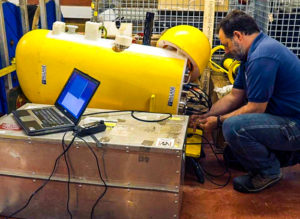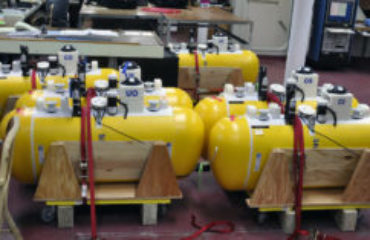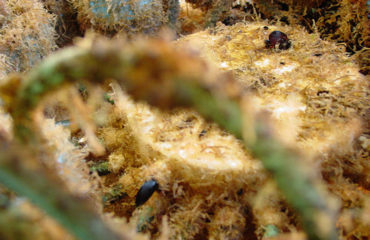
Credit: P. Lourie
During the dropping temperatures of the Arctic autumn, the Beaufort Gyre Observing System (BGOS) & Joint Ocean Ice Study (JOIS) science teams cruise aboard the Canadian ice breaker CCGS Louis St. Laurent, to recover and deploy buoys. McLane Moored Profilers (MMPs) and Ice Tethered Profilers (ITPs) are among the instrumentation on this annual mission.
BGOS moorings continue to provide critical information on the physical properties of the Beaufort Gyre, its currents, chemistry, life forms, and ice. This data is used for monitoring and modeling the Arctic climate’s future state.
While the ITP buoys send data by satellite during the year, MMP data is collected and stored on the profiler’s internal flash card. Recovering an MMP means removing the flashcard and plugging into a computer, so that scientists such as WHOI Research Engineer Jeff O’Brien can begin analyzing a year’s worth of data.
According to Sr. Research Specialist Rick Krishfield, of more than 90 ITPs that have been deployed in the program to date, only about 6 have been in water. This includes an ITP deployed in open water during this recent expedition, because conditions were not conducive to ice deployment.
The Joint Ocean Ice Expedition is a collaboration of the Woods Hole Oceanographic Institution (WHOI) Beaufort Gyre Exploration Program (lead by Dr. Andrey Proshutinsky) with the Department of Fisheries and Ocean Canada (lead by Dr. Bill Williams).



